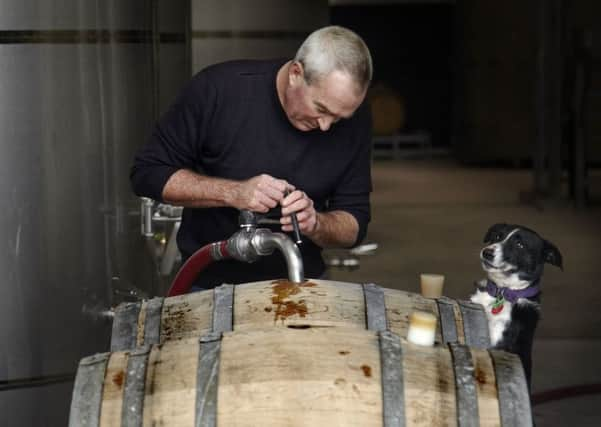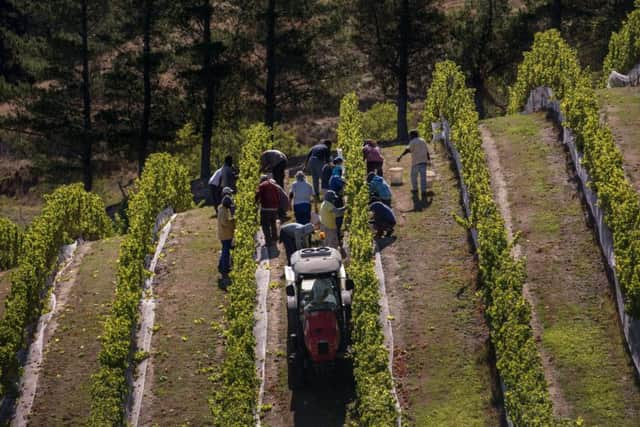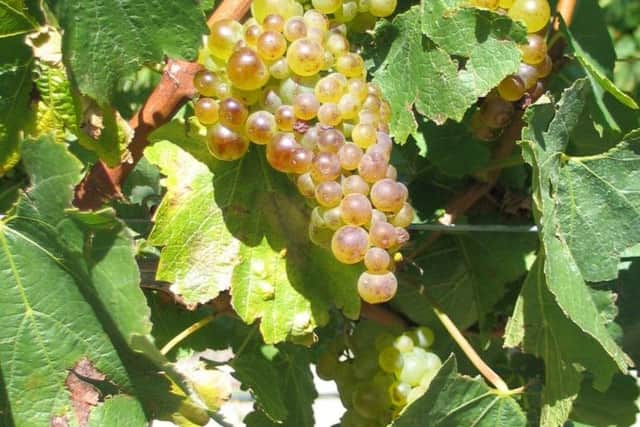How New Zealand's wines became British bestsellers


The grey-haired lady engaging me in conversation at my school reunion looked vaguely familiar but until I imagined the whole room dressed in green tunics and panama hats it wasn’t easy to remember who was who. “We used to drink a lot of Cloudy Bay, but it doesn’t seem quite the same any more,” she said.
Stick-on labels helped to navigate the names, but even then there were surprises. Some of the quiet ones who didn’t really stand out in class all those decades ago had done extraordinarily well. Some were running their own companies or working as doctors, lawyers and (famous) actresses, while others were mothers or had done a variety of jobs as circumstances allowed.
Advertisement
Hide AdAdvertisement
Hide AdOnce thing was certain – none of us were quite the same as we used to be. This is not just true of school reunions but of wines too. It is very difficult for a top-notch wine to stay at the top indefinitely. Even famous Bordeaux châteaux have good years and less good years.


They may have hail or rain, a new patch of vines needs to come on stream, the winemaker may leave, or the marketing department (and I am not talking about Bordeaux here) may decide that a certain price point is all the market will take and so the wine is snipped back at the blending stage to make slightly more volume to sell at the same price as last year.
I can’t tell you what, if anything, has happened to Cloudy Bay. Tasted recently I found it as good as ever with vibrant, lively flavours. But if its regular customers think that it is not as good as it used to be then it is time for them to move on.
This is when I suggested they follow the winemaker. Kevin Judd was recruited by owner David Hohnen to be in charge of winemaking at Cloudy Bay in Marlborough, New Zealand, from the start. He steered the wine from its early days to worldwide icon for 25 years. During that time Cloudy Bay grew from a small private operation to one that was part of one of the most prestigious multinational wine and luxury goods corporations in the world. He resigned in 2008 and started his own label Greywacke (Grey-wack-y). This is the name of the sedimentary rock of New Zealand and even while he was winemaking at Cloudy Bay Kevin was thinking sufficiently ahead to register this name.
Advertisement
Hide AdAdvertisement
Hide AdTaking the leap from employee to owner of vineyards, a winery and a brand is a massive step, so Kevin turned for help to his previous colleagues, James Healy and Ivan Sutherland, who used to be winemaker and viticulturalist respectively at Cloudy Bay. They too had become tired of corporate life and so set up their own winery, Dog Point. When I first visited Dog Point I was surprised just how small it was. No money had been wasted on the buildings, which looked pretty much like a few sheds, but the equipment and barrels were top of the range.


Several years on, the place looks very professional, there are more bays, extensive storage facilities and when I visited just before harvest, there was a feeling of excitement as the grapes were about to arrive. I have previously described Dog Point as the Cloudy Bay Retirement Home, but I was wrong. James and Ivan are in no way retired, just getting on with a second career.
Kevin Judd makes his wines at Dog Point, harvesting grapes early in the day to get to one of the presses first. He has also made good use of his long-time connection with Ivan whose family own extensive vineyards in Marlborough. He sources some of his grapes from the vineyards he has been using for years and also buys in from other growers, but his latest acquisition is a two-hectare hillside site of vines. Half is planted to Pinot Noir, some to Chardonnay, and clearly he will be following organic principles with this vineyard.
There is a plateau at the top of the hill. “Is that for your winery,” I asked? “No, one day I’ll build a house there, with an art gallery behind.” Kevin is not just a terrific winemaker, he is also a very talented photographer with several exhibitions and books to his name.
Advertisement
Hide AdAdvertisement
Hide AdGreywacke and Dog Point are totally different brands despite being made in the same winery. But they each have the hand of the winemaker steering the flavours to the style they want to make. Here are my favourites.


Greywacke Sauvignon Blanc 2016, Halifax Wine Co, £16.95: Miles away from the usual aggressive capsicum-charged style of Sauvignon. This has soft, aromatic notes of melon, and peach then follows through with zesty citrus and a rounded texture that makes this an excellent wine to pair with fish and salads. Also available at Roberts and Speight (£16.95) and Majestic (£19.99).
Greywacke Wild Sauvignon 2014, Ake and Humphris, £27.99: “Wild” means that the fermentation has been done by the natural yeasts from the vineyard. This gives a bigger texture and more complexity. To be honest, the regular Sauvignon gets 10 per cent wild ferment too. This wine is perfectly balanced, with lemon zest, nectarine and herbal notes crossing the palate. What is exceptional is the texture. Creamy, long and perfect to team with scallops, turbot or grilled sea bass. Also available from Harrogate Fine Wine (£27.99) and Majestic (£30).
Dog Point Sauvignon Blanc 2015, Field & Fawcett, £15.85: Zesty, crisp, lemongrass and juicy minerally flavours. A bright lively style of Sauvignon Blanc, to enjoy as an aperitif, or with oysters, goat’s cheese and salads. Also available from Roberts and Speight (£15.95).
Advertisement
Hide AdAdvertisement
Hide AdDog Point Section 94, Sauvignon Blanc 2014, the Wine Society, £19: I hesitate to mention that this wine is fermented and aged in oak, because so many people don’t like oak influence, but it really doesn’t show. It has savoury, nutty notes, passion fruit and lemon notes with a rounded, elegant texture that will take you through from starters to a roast chicken main course. Section 94 is a special part of the vineyard producing particularly high quality grapes.